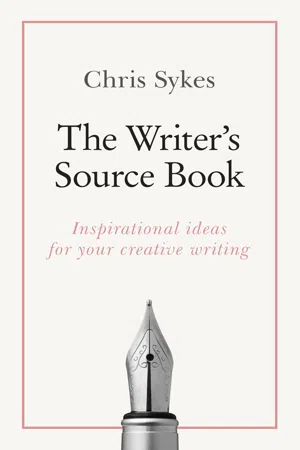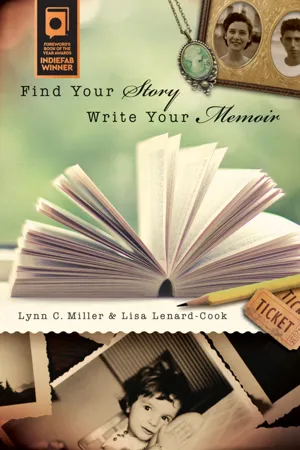Literature
Setting
The setting in literature refers to the time and place in which a story takes place. It encompasses the physical environment, historical period, and social context, providing the backdrop for the narrative. The setting can significantly influence the mood, characters, and events of a story, contributing to its overall atmosphere and impact.
Written by Perlego with AI-assistance
Related key terms
1 of 5
3 Key excerpts on "Setting"
- Robert D. Rhode(Author)
- 2019(Publication Date)
- De Gruyter Mouton(Publisher)
The story of the late nineteenth century may, as we shall see, be termed the story of Setting. Writing in the Atlantic in 1902, Bliss Perry admitted the success of the Setting specialists: The nature of the short story is such that both characters and actions may be almost without significance, provided the atmosphere - the place and time - the background - is artistically portrayed .... The modern feeling for landscape, the modern curiosity about social conditions, the modern aesthetic sense as such, all play into the short story writer's hands. Many a reader, no doubt, takes up Miss Wilkins' stories, not because he cares much about the people in them or what the people do, but just to breathe for twenty minutes the New England air! You may even have home-sickness for a place you have never seen - some Delectable Duchy in Cornwall, a window in Thrums, a California mining camp deserted before you were born, - and Mr. Quiller Couch, or Mr. Barrie, or Bret Harte will take you there, and that is all you ask of them. The popularity which Stephen Crane's war stories enjoyed for a season was certainly not due to his char-acters, for his personages had no character, not even names, - nor to the plot, for there was none. But the sights and sounds and odors and colors of war - as Crane imagined war - were plastered upon his vacant-minded heroes as you would stick a poster to a wall, and the trick was done. In other words, the Setting was sufficient to produce the intended effect. 34 34 The Short Story, Atlantic Monthly, XC, 246 (August, 1902). 24 INTRODUCTION As this opinion indicates, there can be little doubt that by the end of the century the short story of Setting had become a reality. Setting and Natural Scenery Another problem to be considered is that of the relationship which Setting bears to those objects of the physical world which constitute our environment.- eBook - ePub
The Writer's Source Book
Inspirational ideas for your creative writing
- Chris Sykes(Author)
- 2019(Publication Date)
- Teach Yourself(Publisher)
7 Character and Setting In this chapter you will learn:• about creating character through Setting• how to reveal a character’s inner life through place• the importance of objects and Setting• to turn places into plot.Creating character through Setting Just as someone’s dress and the objects they possess can strongly suggest a character, so can where they live or come from – their Setting. Read the following passage.He walked up the steps cutting the steep lawns, past signs to the library and the Schoenberg music block till he found the spot, the walkway between the library and another building. The walkway was lined with cypress trees and cast iron street lamps with glass bulbs on top to illuminate the path at night. They were unlit now except by the quiet glow which came from the daylight resting in them. He wondered what light they gave at night particularly how dark and safe this walkway was. He walked up and down the walkway twice, looking very carefully from side to side and behind each bench and cypress tree then stopped and sat on a flat stone bench next to some scattered peanut shells. They lay broken open by something human or something rodent like, a squirrel or a rat.For a while he sat quietly alone under the unlit lamp. It was not a busy spot, not where people passed unnecessarily, not a place to meet by accident. So what had she been doing here? Suddenly a man came by in jeans and baseball cap, carrying coffee in a Styrofoam cup. A workman, he guessed, as the man receded in his denim shirt and jeans, a black belt on his waist holding tools, gloves tucked into the back pocket of his jeans like his own dad did on the golf course. A noise from the right made him turn his head. Another young man in trainers, white socks and check shorts; then from the left a girl in flop flops, flask in hand. They were all going somewhere. Rucksack on her back the girl hurried on her way. Then it was quiet again and no-one came for a while. - eBook - PDF
- Lynn C. Miller, Lisa Lenard-Cook(Authors)
- 2013(Publication Date)
- University of Wisconsin Press(Publisher)
Yet it is undeni- ably a delight to the senses. . . . The caress it offers may be the touch of the mis- shapen hand, but the caress is no less delicate, sensuous, and welcome. The forest asks us to love what is marred. It shows us the scarred face of beauty, the smile of broken teeth” (). In this excerpt deBuys builds a leitmotif of nature as a lover; his experience, which he invites us to join in, dramatizes the natural world as an intimate familiar. Setting as Metaphor As we discussed in chapter , a strong Setting for your story makes organic sense in the same way that the right structure does: it cements the disparate sections of your story together. In poet Rachel Hadas’s memoir, Strange Rela- tion, the decline of the narrator’s husband, George, is inextricably linked to the New York City landscape. When George takes a different route to his ten- nis match in Central Park, deviating from habits the narrator has witnessed for thirty years, it marks a turning point for her in his progressing dementia: “The new route involved less than one extra block to walk to get to the park. Still, this unexplained change in route and routine made no sense to me. We’d painting the picture painting the picture always gone the other, shorter way; and harmony lay precisely in habit. The fabric of our days was woven from routine” (). When it is eloquent, we often compare gesture to poetry in motion. But, always, as we write and weave together place and character, the body in space is revealing as well as poetic. Sometimes, in addition to serving as landscape and grounding, the Setting takes on symbolic meaning and transcends place, giving us details of milieu and of mood as well as mere location. For example, Annie Dillard’s Pittsburgh is not just a city and its environs but a place during a specific era, the s of her growing up.
Index pages curate the most relevant extracts from our library of academic textbooks. They’ve been created using an in-house natural language model (NLM), each adding context and meaning to key research topics.


